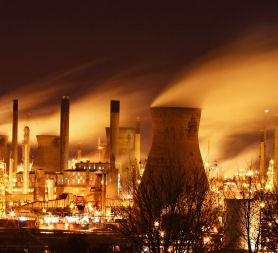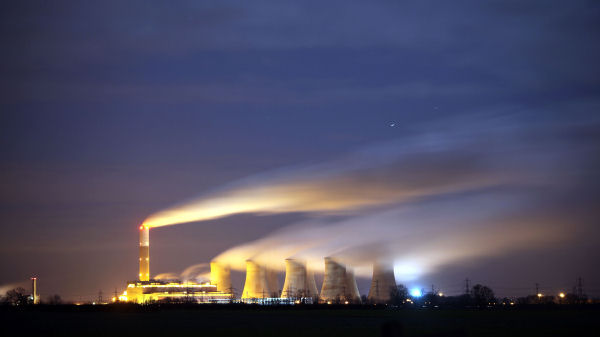Carbon capture: saviour of coal?
Carbon dioxide “capturing” could be a major step in the battle against climate change. Julian Rush visits a power station in Scotland and asks could this be the saviour of coal?

At Scottish Power’s huge 2400MW Longannet plant on the Firth of Forth, a shining silver pipe snakes from the station’s flue to two pale blue containers and a bird’s nest of tubes, valves and dials on the ground by the river.
Part of a joint £30m research project with Norway, it is a test rig to prove Carbon Capture and Storage (CCS) is viable on a commercial scale.
A lot hangs on getting it right. CCS has been promoted by governments and the fossil fuel industry as the saviour of coal as an energy source as the world struggles to cut carbon emissions in the face of climate change.
Coal is the dirtiest of fossil fuels, but also the cheapest and most plentiful; there are 50,000 coal-fired power stations around the world pouring millions of tonnes of CO2 into the atmosphere. Hundreds more are being built as China and India develop their economies.
The first company to design and build a commercially viable CCS plant that can be retro-fitted to existing power stations stands to corner a huge global market.
Scottish Power believes it can achieve this at two of Longannet’s four furnaces by 2014. And the plant is, it says, ideally placed to pipe the CO2 out to be stored under the North Sea using much of the existing gas infrastructure.
But first they have to make it work.
Capturing CO2 is actually an old and proven technology – it’s used in the soft drinks industry to put the fizz into fizzy drinks. But doing it on the dirty, chemical cocktail of gases from a power station chimney is a different matter altogether.
Capturing CO2 is actually an old and proven technology – it’s used in the soft drinks industry to put the fizz into fizzy drinks.
The CO2 is captured by passing the flue gas up a tower through a spray of chemicals called amines (organic compounds derived from ammonia). But a huge amount of energy is then needed to then split the CO2 from the amine solution so it can be collected.
In the case of a power station like Longannet, the current amines available would need some 30 per cent of the station’s power output, crippling it commercially. That is why CCS has never been done before.

The test rig is designed to get an understanding of how to deal with the contamination of real-life flu gases and to test the next generation of lower-energy amines being developed with the University of Trondheim in Norway that Scottish Power hopes will halve the energy penalty of CCS.
The company hopes to win funds to build its full-scale demonstration plant in the government’s CCS competition. In April, ministers said four projects would be funded but no decisions are in sight.
Unlike its more controversial competitor – E.on’s Kingsnorth in Kent – it doesn’t mean building a new power station. Because of that, the Longannet project was recently endorsed by the environmental group WWF on the grounds it would genuinely cut emissions, not add to them.